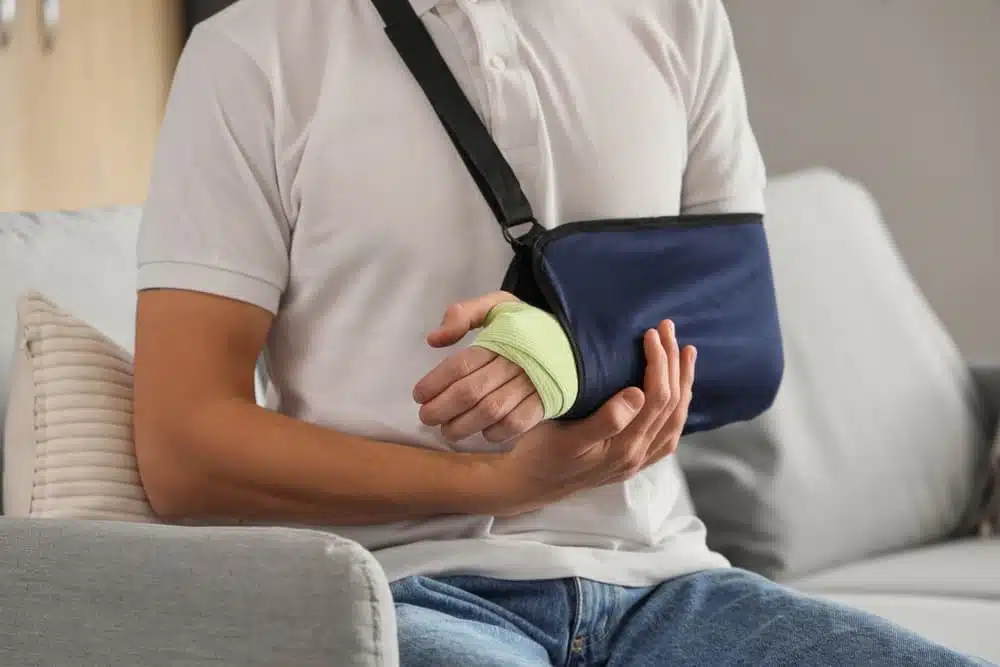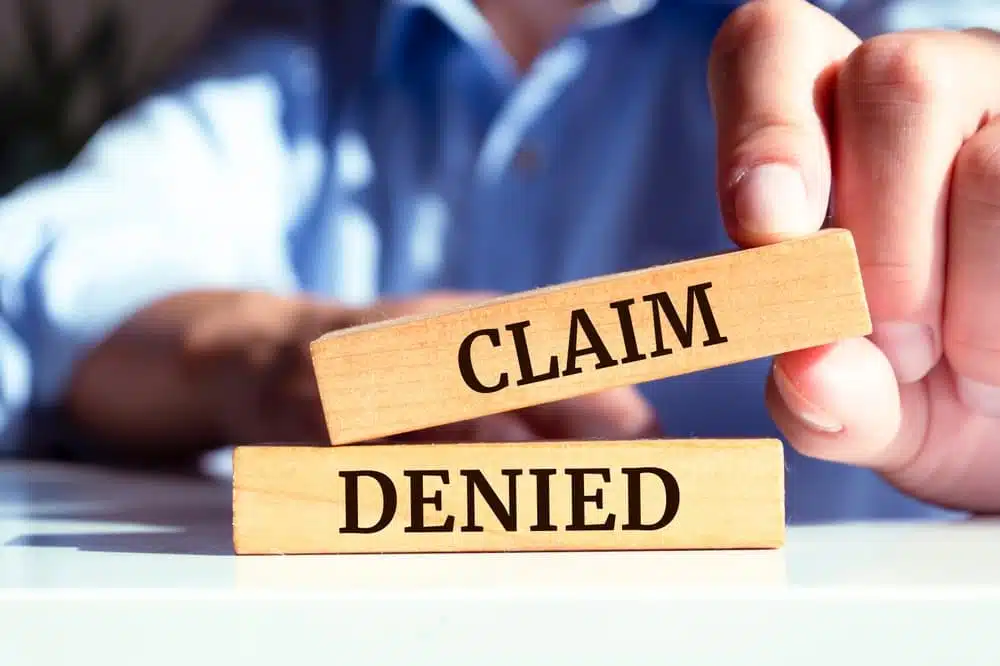
Experiencing an accident can upend your entire world in an instant. Aside from the physical injuries, many victims face emotional and psychological aftershocks that linger long after their wounds have begun to heal. This unseen toll, often referred to as “pain and suffering,” is a critical part of personal injury claims. While it may not be visible to the naked eye, its impact can be profound, making life as you once knew it feel out of reach.
If you’re currently recovering from an accident, you may wonder how to convey the full extent of your pain and suffering to those responsible for compensating you. Let’s walk you through the importance of documenting and proving your pain and suffering and how a personal injury lawyer can help you through this difficult process.
What Is Pain and Suffering?
Pain and suffering refer to the physical and emotional distress caused by an injury. On one hand, there’s the physical pain—the throbbing aches, difficulty moving, or chronic discomfort that can follow an injury. On the other hand, there’s the emotional pain—the anxiety, depression, trauma, and distress that accompany the disruption of your normal life. Both types of suffering are very real, and courts recognize that these factors deserve compensation because of the impact they can have on your quality of life.
For example:
- Physical pain could include the severe discomfort caused by a broken bone or the chronic aching of a back injury.
- Mental anguish, such as post-traumatic stress disorder (PTSD), is common after traumatic experiences like car accidents. You may find yourself reliving the event or avoiding situations that trigger flashbacks.
- Loss of enjoyment of life—when your injury prevents you from engaging in hobbies, socializing, or even performing daily routines that once brought you joy.
The key to claiming compensation for pain and suffering is convincing insurance adjusters, defense attorneys, or ultimately a jury that these experiences have significantly and negatively affected your life.
Why Documenting Pain and Suffering Is Crucial
It’s not enough to simply say, “I’m in pain,” or “I feel depressed.” Because pain and suffering are harder to quantify than medical bills or lost wages, strong documentation becomes essential. Clear, organized records create a vivid picture of how your life has changed since your injury and provide proof that supports your claim.
Here are some ways meticulous documentation can strengthen your case:
- Tying pain to the accident – Detailed records can show how your physical injuries or emotional distress directly stemmed from the incident, leaving little room for doubt.
- Conveying the full impact – Having thorough documentation makes it easier for others to understand how your suffering has diminished your quality of life.
- Establishing credibility – Accurate, plain-as-day evidence can discredit attempts to downplay or minimize your suffering by opposing parties.
By providing a high level of detail, you ensure that your suffering becomes real, relatable, and undeniable—rather than abstract or hypothetical—in the eyes of those responsible for compensating you.
How to Prove Physical Pain
Proving physical pain often begins with showing the extent of your injuries. These injuries are the foundation of your claim for pain and suffering, and a variety of tools can help you substantiate what you’ve endured.
Medical Records and Reports
Medical documentation is one of the strongest pillars of any pain and suffering claim. It is critical that you seek medical attention promptly after your accident—not only to ensure your health but also to create a paper trail that correlates the accident to your injuries.
Include detailed records such as diagnostic tests (X-rays, MRIs, etc.), surgery reports, physical therapy documents, and even prescription drug notes that show your treatment progression.
Request that your medical provider note all complaints of pain, physical limitations, and required treatments in your records. For example, a doctor’s notes about your limited mobility or trouble sleeping can further illustrate your suffering.
Photographs and Videos
Sometimes, a picture is worth more than words, and this is especially true when it comes to physical injuries. Take photographs of visible injuries like scars, bruising, swelling, or casts as often as possible to show different stages of healing. These visual records are visceral reminders of your pain and its lasting physical effects.
Pain Journal
Consider keeping a daily or weekly journal that tracks how you feel physically. Describe any pain you experience, including its location, intensity, duration, and whether it affects your ability to go about everyday tasks. Use specific language over general statements. For instance, instead of writing, “I feel bad,” you could say, “Sharp pain shoots down my left leg each time I walk up the stairs, making me hesitate before climbing them.”
Expert Testimonies
Medical experts may be called upon to explain the nature of your injuries and testify to the pain you’re likely experiencing. An orthopedic surgeon, for instance, might explain how your fractures contribute to ongoing discomfort, even when healing seems outwardly complete.
How to Prove Emotional and Psychological Suffering
Unlike physical injuries, emotional distress doesn’t leave visible marks—but the scars can cut just as deeply. Emotional and psychological pain are just as important to the healing and compensation process, and proving this type of suffering requires care and diligence.
Mental Health Records
Seeking therapy or counseling after your accident is a crucial step in both healing and proving emotional distress. Licensed professionals like psychologists or psychiatrists can diagnose conditions such as:
- Anxiety
- Depression
- Post-Traumatic Stress Disorder (PTSD)
- Emotional instability caused by chronic pain or lifestyle changes
Encourage your therapist to provide detailed reports and progress notes summarizing how the accident has affected your mental state.
Testimonies from Loved Ones
Your friends, family members, or colleagues can serve as witnesses to the changes they’ve observed in your behavior or emotions. For example, they might describe how you’ve become withdrawn, lost interest in cherished activities, or seemed noticeably more irritable since the accident.
Records of Interrupted Activities or Life Events
Document areas where your injury prevented you from participating in meaningful experiences. This might mean missing vacations, canceling plans, leaving a job, or even being unable to care for loved ones.
Your Journal
Just as you might document physical pain, keeping an emotional journal can be a powerful way to externalize your feelings while providing concrete evidence of your mental struggles. Use this space to describe nightmares, panic attacks, or the despair you felt after losing the normalcy you once knew.
How Is Pain and Suffering Calculated?
Pain and suffering damages are meant to compensate for the physical and emotional toll an injury takes on your life. Unlike medical expenses or lost wages, these damages are not easily quantified, making their calculation more subjective. Two common methods are often used to estimate pain and suffering compensation:
- The Multiplier Method: This involves adding up your economic damages, such as medical bills and lost income, and multiplying that amount by a number, usually between 1.5 and 5. The multiplier is chosen based on the severity of your injuries, the extent of your pain, and the lasting impact on your life. For example, more severe injuries may warrant a higher multiplier.
- The Per Diem Approach: With this method, a daily monetary value is assigned to your pain and suffering, reflecting how much you endure each day. This daily rate is then multiplied by the number of days you spend recovering.
Because these calculations are subjective, thorough evidence—such as medical documentation, pain journals, and expert opinions—plays a crucial role in demonstrating your suffering.
The Role of an Attorney in Proving Pain and Suffering
An experienced attorney plays a vital role in proving pain and suffering, helping you secure fair compensation while supporting you through a challenging time. Here’s how they can make a difference:
Crafting a Compelling Narrative
Attorneys ensure that your pain and suffering are presented in a way that is persuasive and impactful. They link your personal experiences to the legal framework, making the impacts of your injuries clear and undeniable.
Gathering Crucial Evidence
They collect and organize key documents like medical records, pain journals, therapy notes, and witness statements. This comprehensive approach strengthens your claim, providing a solid foundation for proving your suffering.
Leveraging Expert Testimonies
Attorneys work with medical, psychological, and economic experts who can testify to the severity of your injuries and the emotional toll they’ve taken. These experts lend credibility to your claim and help illustrate the true extent of your suffering.
Countering Insurance and Defense Tactics
Insurance companies and defense attorneys often attempt to downplay or dispute claims. Your attorney anticipates these arguments, skillfully counters them, and ensures no aspect of your pain and suffering is minimized or overlooked.
Providing Emotional and Practical Support
Beyond legal guidance, attorneys relieve you of the stress of navigating complex procedures. They handle the legal details, allowing you to focus on healing and rebuilding your life.
Maximizing Compensation
By combining thorough documentation with skills in negotiation or litigation, attorneys fight to obtain the full compensation you deserve for both physical and emotional damages.
Partnering with an experienced attorney gives you an advocate dedicated to your well-being and committed to achieving justice on your behalf. You don’t have to face this battle alone.
Pitfalls to Avoid
Proving pain and suffering in a personal injury case is often a delicate and complex process. While you may feel confident about the validity of your claim, even small missteps can weaken your case and lead to compensation falling short of what you deserve. It is crucial to understand that the defense and insurance companies are likely to scrutinize every detail of your claim, looking for opportunities to minimize your pain and suffering. By being aware of common pitfalls and avoiding them, you can protect the strength of your case.
- Downplaying Your Pain: Many people are inclined to simply “push through” pain or “grin and bear it.” While admirable, denying your symptoms—whether to yourself, doctors, or loved ones—can weaken your case. Be honest about how you feel and seek the care you need.
- Failing to Follow Medical Advice: If you don’t follow your doctor’s treatment plan, this can be used as an argument that your injuries are not as severe as claimed.
- Social Media Pitfalls: Be mindful of sharing photos or posts that paint an unrealistic image of your recovery. A single picture can be taken out of context and used to dispute your suffering.
Why You Need an Attorney to Help Establish Your Claim
You should never have to carry the burden of proving your pain and suffering alone. The road to fair compensation is complicated, and having an attorney ensures that you’re not only heard but that your case is handled with precision and care.
Far too often, insurance companies or defense attorneys will seize on gaps in evidence or statements made out of context to deny or undervalue claims. A knowledgeable attorney who understands the nuances of these battles can help protect you against such tactics.
Turning to the Rothenberg Law Firm LLP
For over 50 years, the Rothenberg Law Firm LLP has stood beside personal injury victims, helping them rebuild their lives after life-altering accidents. We know how devastating injuries can be—physically, emotionally, and financially—and we bring compassionate, focused attention to every case we take on.
Our team works tirelessly to gather the evidence needed, consult with the right experts, and deliver maximum compensation for our clients’ pain and suffering. With billions recovered for accident victims, we have the experience and dedication necessary to level the playing field against powerful opponents like insurance companies.
If you or a loved one has suffered due to someone else’s negligence, know that you don’t have to face this difficult time alone. Reach out to the Rothenberg Law Firm LLP today at (800) 624-8888 or through our online form for a free, no-obligation consultation.





